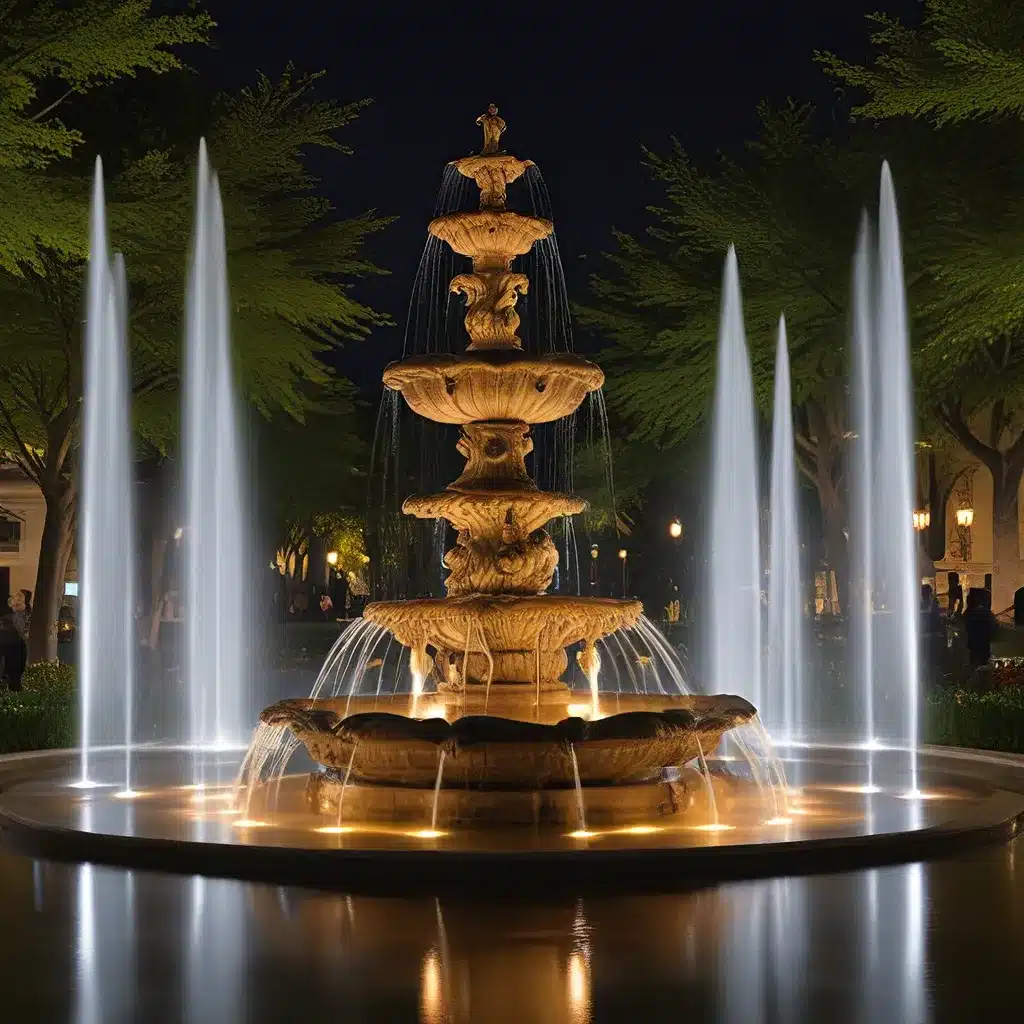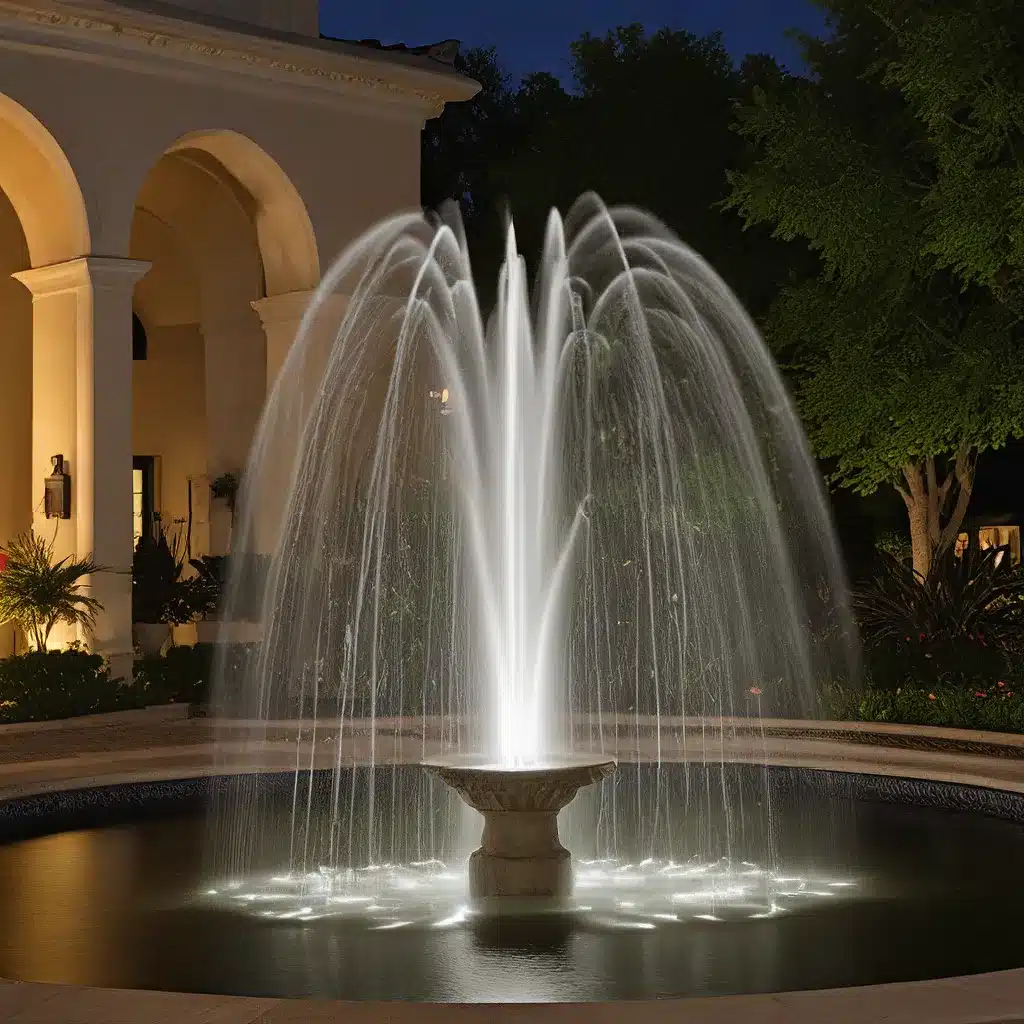
Fountain Design Essentials – Welcome to Fountain Lights
Fountain Design Essentials – Welcome to Fountain Lights

Fountain hydraulics, an intricate and fascinating aspect of fluid mechanics, is the unsung hero behind the mesmerizing water displays that captivate our senses. It’s a field that combines the principles of engineering, physics, and aesthetics to create visually stunning and technically proficient water features. As a self-proclaimed fountain enthusiast, I’ve delved deep into the world of hydraulics, and let me tell you, it’s a rabbit hole worth exploring.
Let’s start with the basics. Hydraulics, at its core, is the branch of science concerned with the practical applications of fluids in motion. In the context of fountains, it deals with how water is moved, controlled, and ultimately transformed into breathtaking works of art. It’s a delicate balance between gravity and pressure, the driving forces that shape the very essence of a fountain’s design.
Gravity, that ever-present force, pulls the water down, creating a natural flow, while pressure, applied through the magic of pumps, propels the water upwards or through an intricate network of pathways. Understanding this balance is crucial in designing a fountain that not only functions reliably but also creates the desired visual effect. It’s like a carefully choreographed dance, where each step (or in this case, each water droplet) is meticulously planned and executed.
At the heart of a fountain’s hydraulic system are the pumps, the unsung heroes responsible for moving the water from point A to point B and beyond. There are several types of pumps used in fountains, each with its own unique strengths and applications. Submersible pumps, for instance, are the ideal choice for smaller fountains as they are quiet and easy to install, nestled comfortably within the water itself. On the other hand, external pumps, more powerful and suitable for large-scale fountains, are installed outside the water, ready to propel the liquid to dizzying heights.
The selection of the right pump is crucial, as it depends on factors like the fountain’s size, the desired height of water projection, and the complexity of the water patterns. It’s a delicate balance, much like a chef choosing the perfect ingredient to elevate a dish. Get it right, and the fountain will sing; get it wrong, and the entire performance can fall flat.
Once the water is set in motion by the pumps, it needs a way to travel from the source to the fountain’s display elements. This is where the pipes and channels come into play. The material and design of these components are critical for efficient water flow and longevity. From PVC and plastic for smaller, simpler designs to copper and stainless steel for larger, more elaborate fountains, the choices are many and each has its own unique benefits.
But it’s not just about the pipes themselves; the diameter and length of these conduits also play a crucial role in determining the water pressure and flow rate, which are key to achieving the desired visual effects. It’s like a symphony, where every instrument (or in this case, every pipe) must be perfectly tuned to create the grandest of melodies.
And let’s not forget the stars of the show – the nozzles and jets. These are the final elements where the water exits the fountain system, and they are responsible for shaping the water display. From a gentle spray to a powerful jet, the design and positioning of these nozzles are central to the aesthetic appeal of the fountain, allowing for intricate patterns and designs that captivate the senses.
Understanding the dynamics of water flow is crucial in fountain design. Laminar flow, characterized by smooth, orderly water movement, creates sleek, glass-like streams that mesmerize the eye. In contrast, turbulent flow, with its chaotic and irregular movement, is used to create lively, splashy effects that add an element of surprise and delight.
Manipulating these flow types is akin to a maestro conducting an orchestra, each water droplet a musician in the grand performance. By carefully controlling the velocity and pressure of the water, designers can craft a wide range of visual experiences, from the graceful arcs of a high-pressure system to the gentle cascades of a lower-pressure flow.
At the heart of fountain hydraulics lies a deep understanding of Bernoulli’s Principle and Pascal’s Law, two fundamental concepts that underpin the operation of these captivating water features.
Bernoulli’s Principle explains how velocity and pressure interact within a moving fluid, a crucial consideration in designing fountains that need to balance these two forces. Pascal’s Law, on the other hand, states that pressure applied to a confined fluid is transmitted equally in all directions, a principle that is essential in the operation of hydraulic systems in fountains.
It’s a delicate dance, where the interplay of these scientific principles creates the breathtaking displays we admire. And as with any great performance, the true magic lies in the seamless integration of art and engineering.
One of the primary challenges in fountain hydraulics is finding the perfect harmony between aesthetic goals and engineering realities. Designers must consider a myriad of factors, from water distribution and wind interference to maintenance needs, all while creating visually appealing and emotionally resonant displays.
It’s akin to a sculptor carefully chiseling a masterpiece, every stroke a deliberate move towards the final, awe-inspiring creation. And just like a sculptor, fountain designers must have a keen eye for detail, a deep understanding of their medium, and the ability to anticipate the unexpected.
In the ever-evolving landscape of fountain design, sustainability has become a crucial aspect. As the world becomes more conscious of our environmental impact, the field of fountain hydraulics has embraced innovative solutions to minimize waste and maximize efficiency.
Recirculating water systems, for instance, have become the new standard, reducing water consumption and loss. Additionally, advancements in energy-efficient pumps and the incorporation of environmentally friendly materials have transformed the way fountains are designed and maintained.
It’s a testament to the ingenuity of the human mind, as we strive to create visual masterpieces while respecting the delicate balance of our planet. And as we look to the future, the integration of smart technologies and automation promises to take fountain design to new heights, with sensors and computer-controlled systems optimizing water usage and choreography, all while harnessing the power of renewable energy sources.
The rich history of fountain design is a testament to the enduring human fascination with water and its ability to captivate the senses. From the historical grandeur of the Trevi Fountain in Rome to the modern wonders of the Bellagio Fountains in Las Vegas and the Dubai Fountains, the evolution of this field reflects both technological advancements and changing aesthetic tastes.
As we explore the world of fountain hydraulics, we uncover a tapestry of innovation and artistry, where the principles of engineering and the whims of creativity intertwine to create experiences that leave a lasting impression. And as we continue to push the boundaries of what’s possible, the future of fountain design promises to be a captivating journey, one that will undoubtedly leave us in awe of the power and beauty that water can unleash.
Now, let’s delve a little deeper into the heart of fountain hydraulics – the nozzles. These unsung heroes are the final elements where water exits the fountain system, and they play a crucial role in shaping the water display. From the gentlest of sprays to the most powerful of jets, the design and positioning of these nozzles are central to the aesthetic appeal of the fountain.
Fountain Lights offers a wide range of nozzle options, each with its own unique capabilities and visual effects. Flat jet nozzles, for instance, create a sleek, sheet-like flow of water, perfect for creating elegant, linear patterns. Floating nozzles, on the other hand, generate a mesmerizing, cloud-like effect, as the water appears to defy gravity and hover in the air.
But the versatility of nozzle selection goes beyond just the visual appeal. Mist nozzles, for example, can be used to create a refreshing, cooling effect, ideal for outdoor spaces in warm climates. Spinning nozzles, with their whimsical, twirling water displays, add an element of playfulness and surprise to any fountain.
The choice of nozzle is not merely an aesthetic decision; it’s a strategic one that takes into account the specific needs and desired effects of the fountain design. By carefully selecting the right nozzles and positioning them with precision, designers can craft water displays that captivate the senses and leave a lasting impression on the viewer.
As we look to the future, the world of fountain hydraulics is poised for even greater advancements. The integration of smart technologies and automation promises to revolutionize the way we design and interact with these water features.
Imagine a fountain that can adapt to changing environmental conditions, adjusting its water patterns and lighting to create a dynamic, responsive display. Or a system that can monitor water usage and efficiently manage its resources, ensuring that every drop counts in our quest for sustainability.
These innovations are no longer just dreams; they are the reality that the future holds. And as we embrace these technological advancements, we’ll see the art of fountain design evolve in exciting new ways, pushing the boundaries of what’s possible and captivating audiences with ever-more breathtaking displays.
As I’ve delved deeper into the world of fountain hydraulics, I’ve come to appreciate the sheer complexity and beauty of this field. It’s a tapestry of art, science, and engineering, woven together to create experiences that leave a lasting impression on the senses.
From the intricate dance of laminar and turbulent flows to the strategic selection of nozzles and the integration of smart technologies, every aspect of fountain design is a testament to the ingenuity of the human mind. And as we continue to push the boundaries of what’s possible, I can’t wait to see what the future holds for this captivating art form.
So, the next time you find yourself mesmerized by the graceful arcs of a fountain or the mesmerizing patterns of its water display, take a moment to appreciate the hidden magic that lies beneath the surface. It’s a world of hydraulics, science, and creativity, all coming together to create something truly extraordinary. The possibilities are endless, and the wonders of fountain design are just waiting to be discovered.
Share to :
Subscribe to our newsletter for the latest in fountain design, innovative lighting ideas, and exclusive tips straight to your inbox. Join the community shaping the future of water features.

Rapid delivery to your doorstep.

Excellence in every product.

Great value for your investment.

Assistance at any hour.
Fountain Lights — Illuminating creativity in every splash!
Copyright © 2023. All Right Reserved